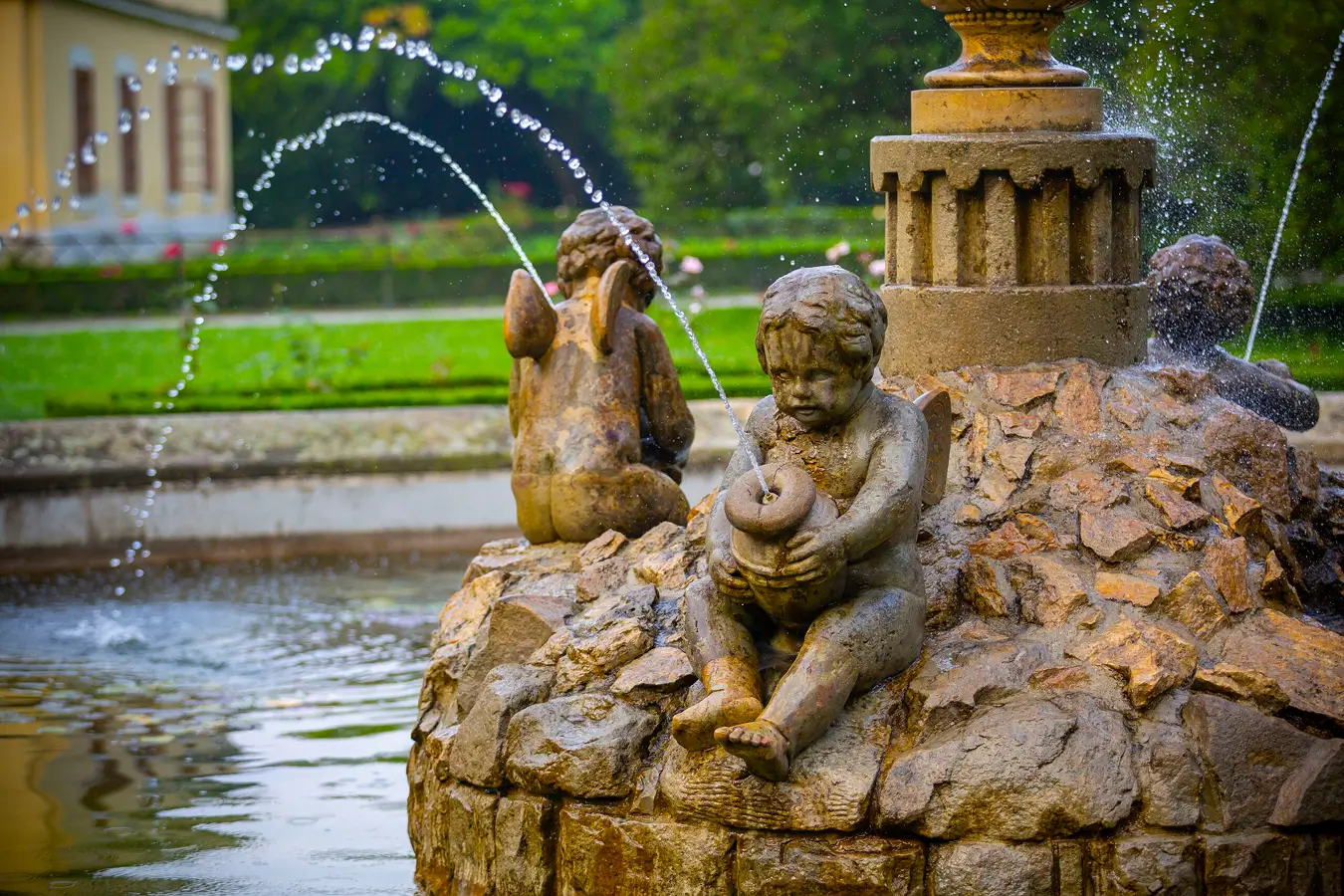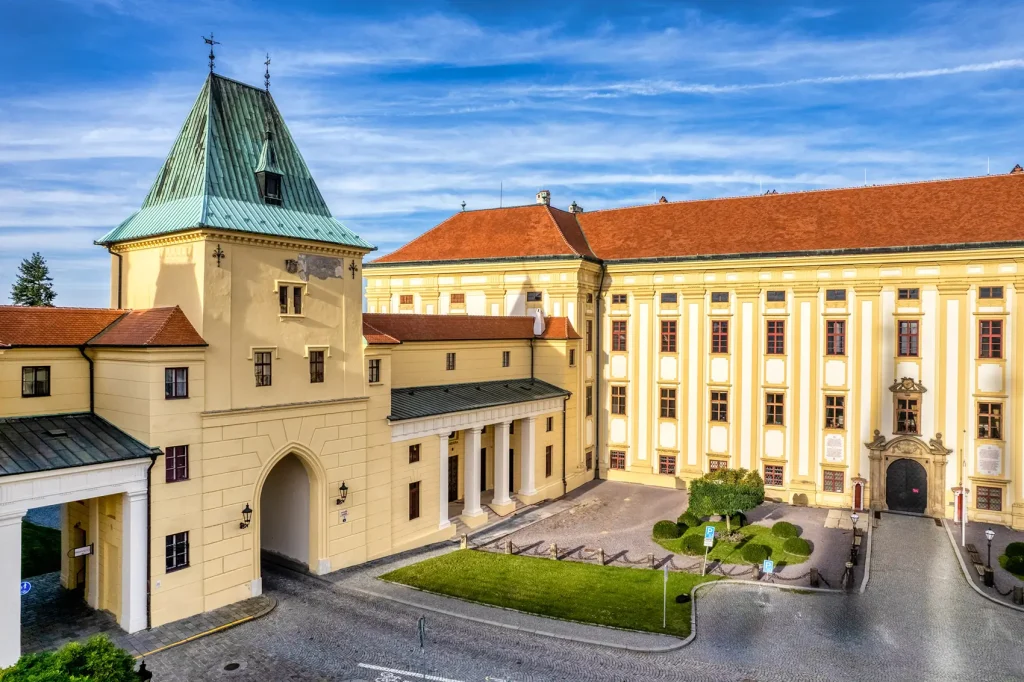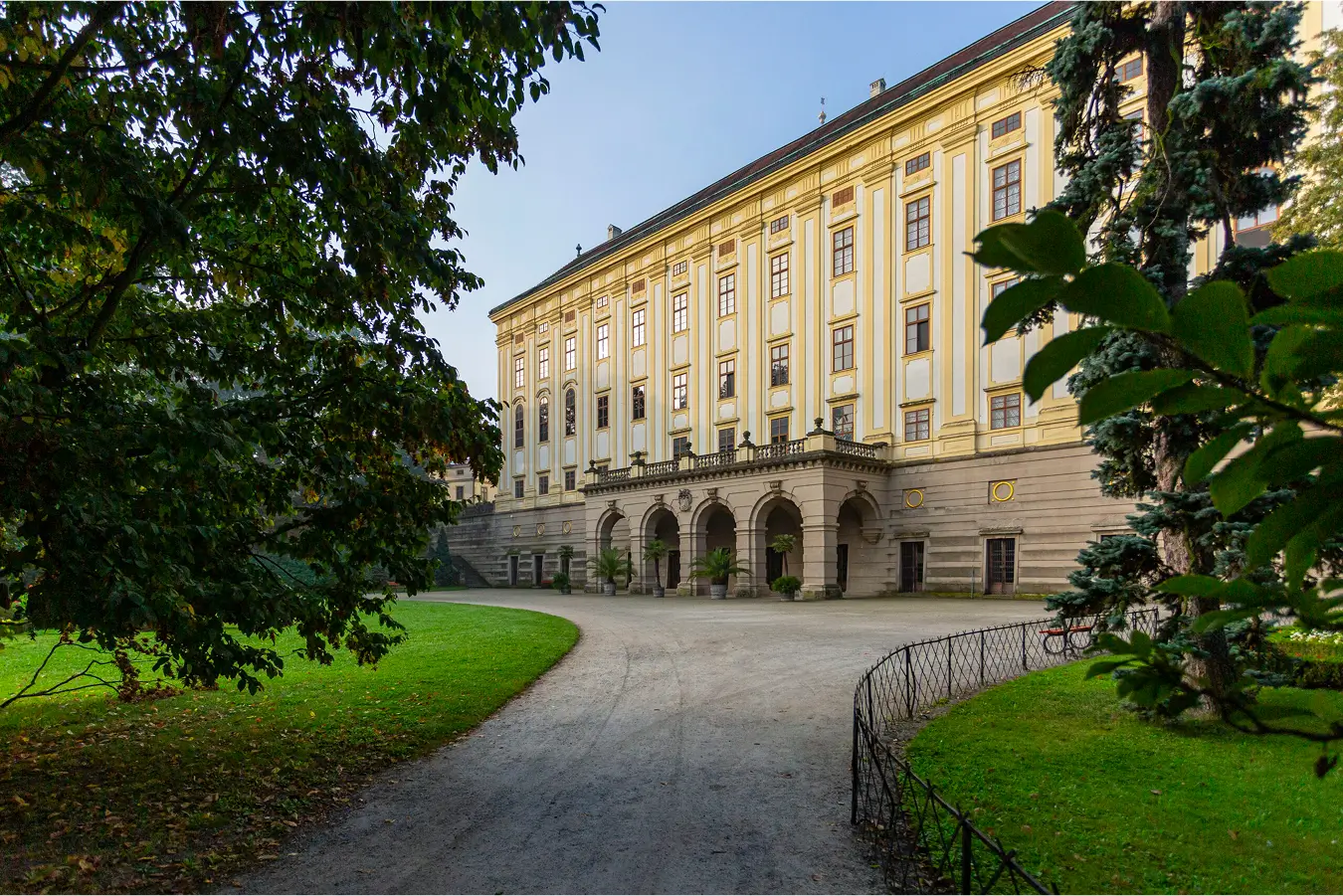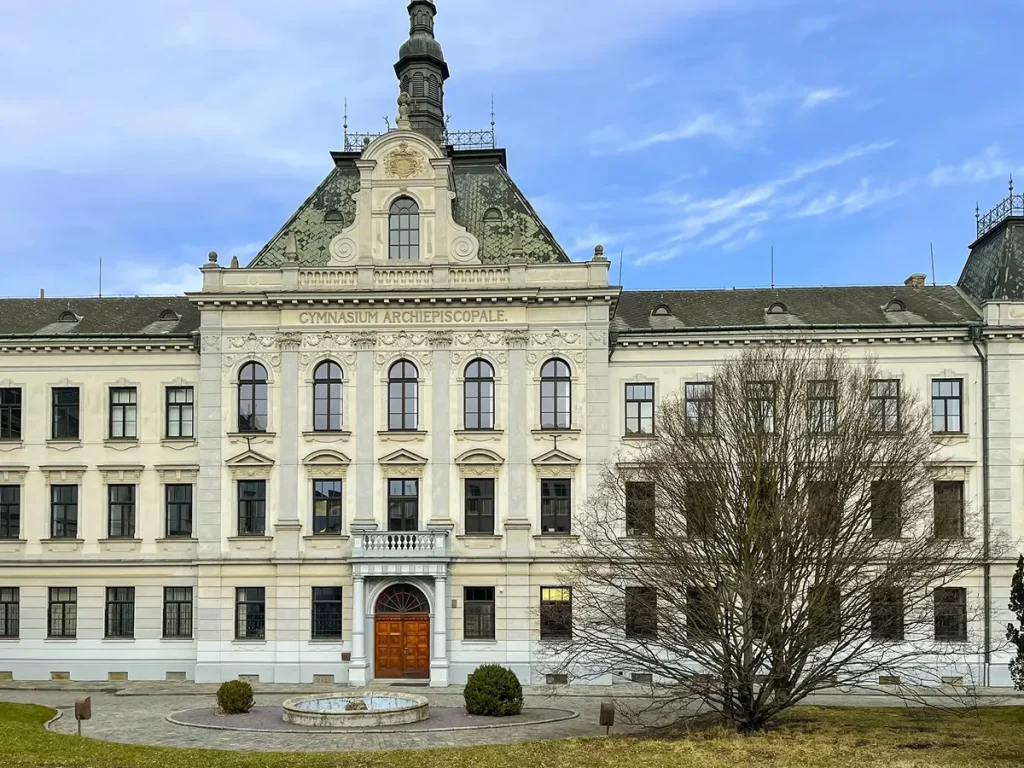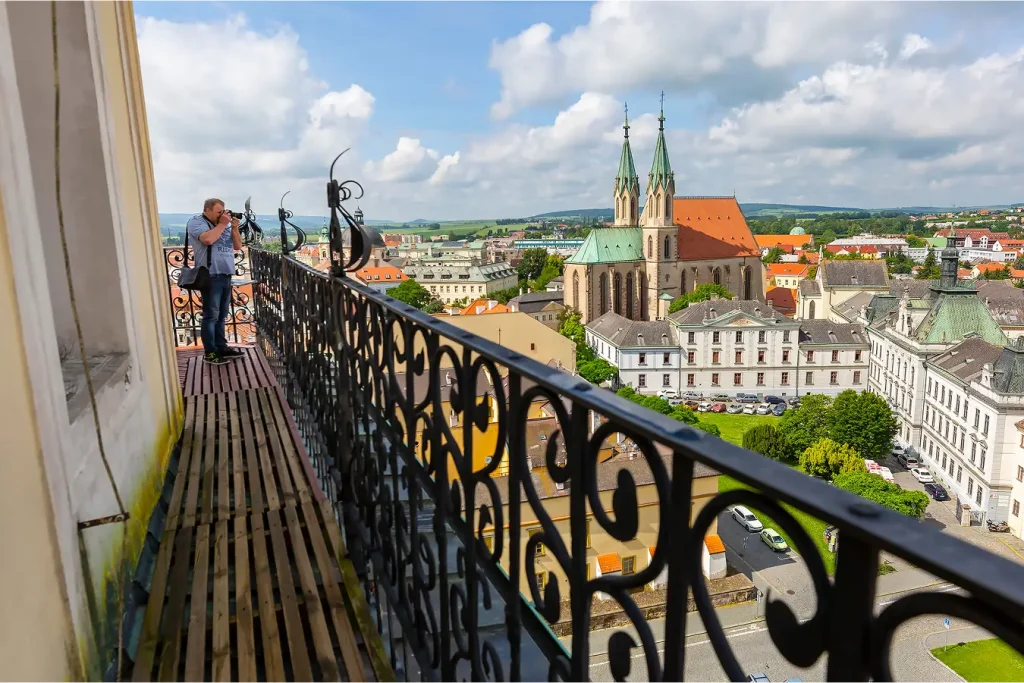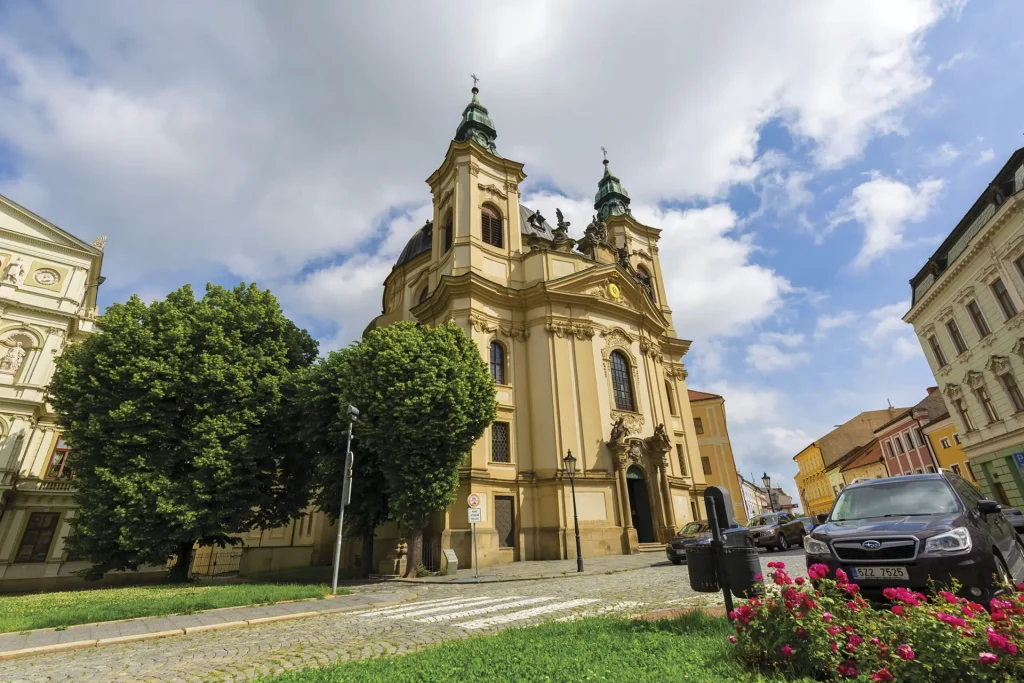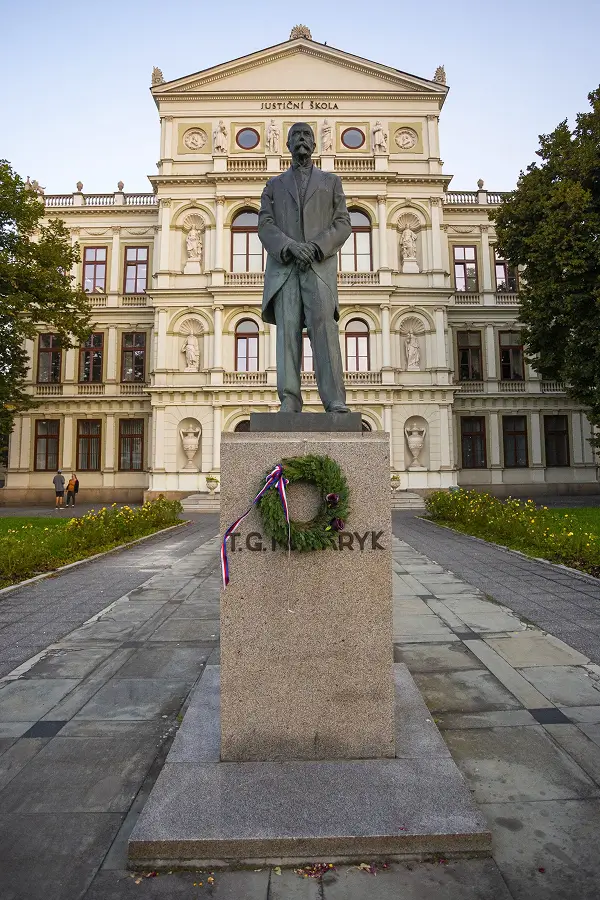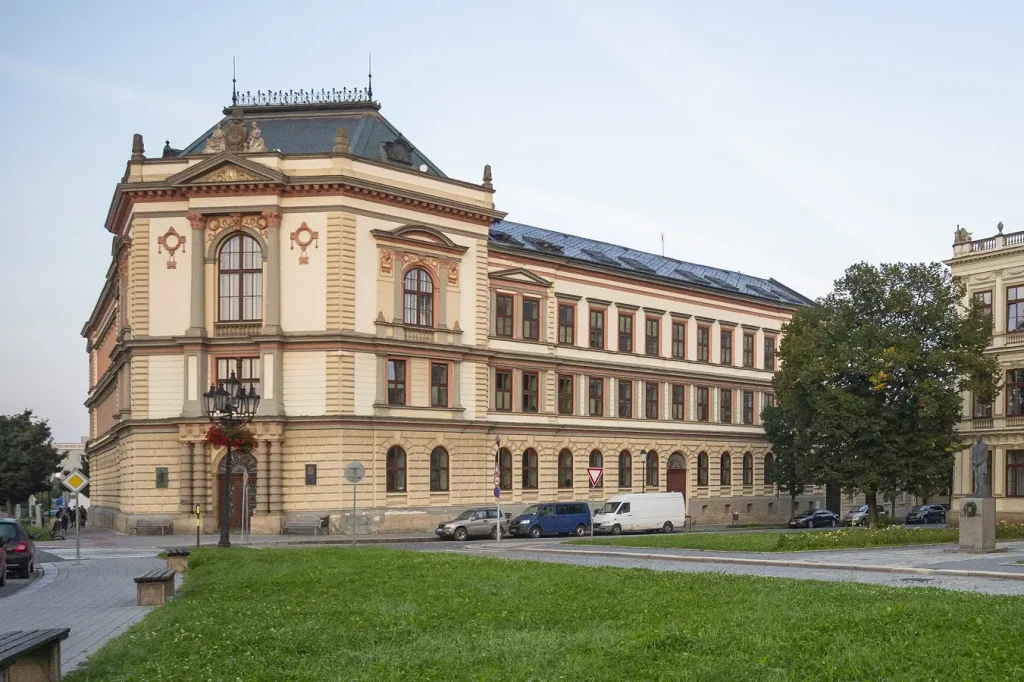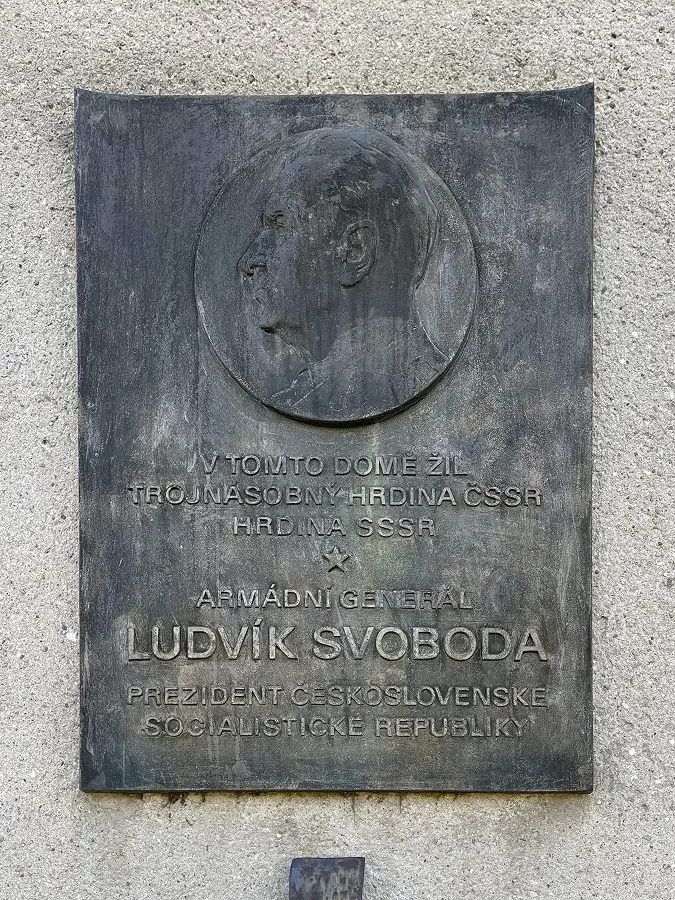Route Length: 1.5 kmDuration: approx. 30 min (does not include guided tours of individual locations)
Kroměříž is a town of rich history and sights. The combination of picturesque corners, charming alleys and arcades creates a unique atmosphere and invites both tourists and locals to stroll and explore its historic centre. It fully deserves the nickname “Athens of Haná” related to the cultural importance of the town and to the large number of schools, which have always formed an important part of this town’s legacy.
The most famous and most visited tourist destinations in Kroměříž are the Archbishop’s Chateau, the Chateau Garden, and the Flower Garden – this entire complex has been on the UNESCO World Heritage List since 1998.
The Archbishop’s Chateau and Gardens walking route is almost identical to the official UNESCO route created in 2014. It is marked by brass arrows in the shape of the town logo placed directly into the pavement. These arrows point towards the Flower Garden and lead you along the most important monuments of the historic town, which has been a bastion of Church power since its foundation.
Scan the QR code to get information about this route.

